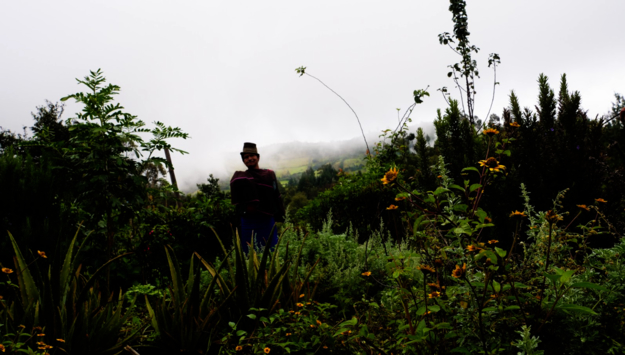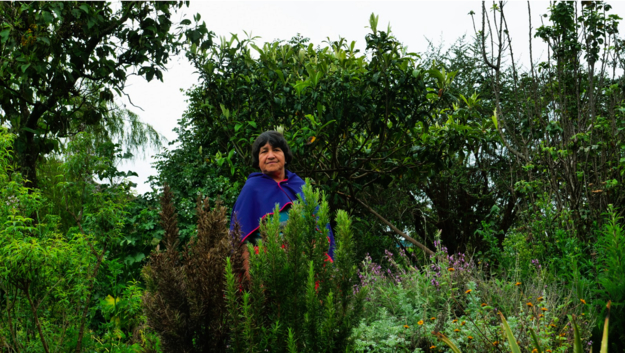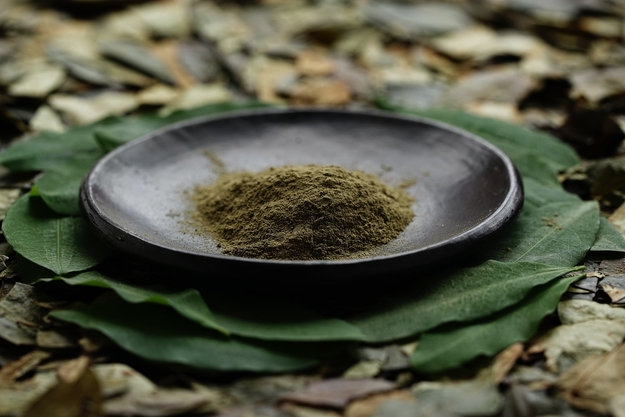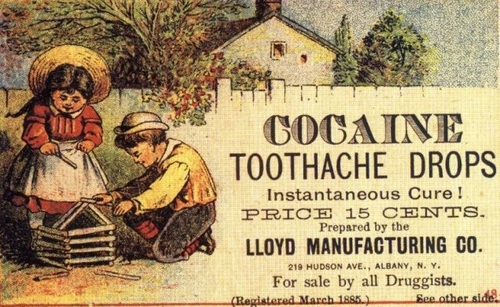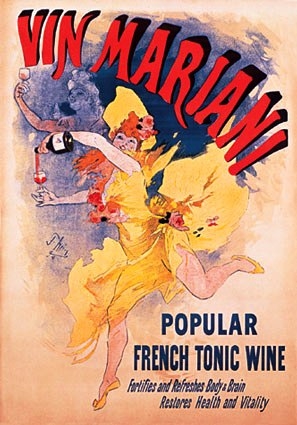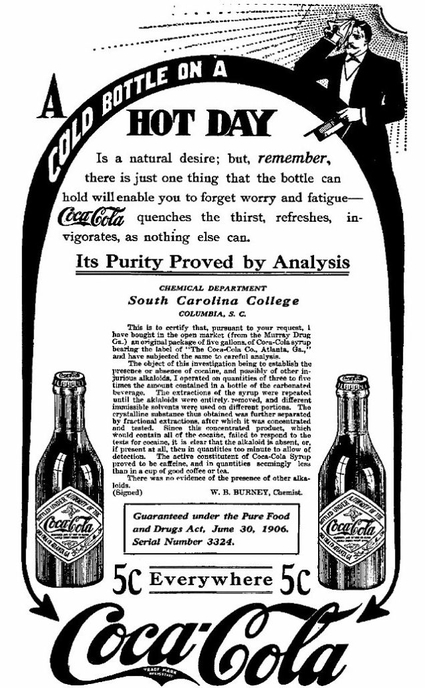The first use of the leaves of the coca plant dates back to prehistoric Andean populations, approximately 4,000 years ago. From the Yunga communities of Bolivia to the Quechua in Perú, the coca plant (Erthyroxylum) is considered an integral part of the daily lives of millions of South Americans. Coca leaves work as a stimulant, a local anesthetic, suppress fatigue and altitude effects, and were used to combat many illnesses traditionally (Allen 1988). For these reasons, in Bolivia, coca leaves are consumed daily in the form of a chewing paste called akhuliku (Vidaurre 2006). Sun-dried leaves are placed in the mouth one or two at a time. As the saliva permeates the leaf and extracts the chemical compounds, the leaf turns a rich green colour. The juice of the coca leaf has a distinctive grassy flavour, like green tea leaves, that many people describe as pleasant. The initial moments of chewing also produce bitterness, which is the natural flavour of many alkaloids present in the leaf that produce a more mud-earthy smell. It is customary to add a pinch of powdered lime or an alkaline paste known as lipta, lejía, tocra or mambe to enhance the experience.
Associations of coca with such medicinal benefits have unfortunately been replaced with notions of addiction and violence, and not without several contextual reasons. According to Janneke Nijmeijer, the founder of the Fair Trade Coke foundation, “Today’s stigma of coca in the Netherlands is also based on a conditioned misconception that originated in the colonial era. When colonizers arrived in South America, they viewed indigenous people as inferior, along with their practice of chewing coca leaves. In their eyes it was something beastly (Roncken 1994).” However, it was only due to a steady and abundant supply of coca from South America through German botanists which allowed for experimentation by physicians, that the positive effects of coca and its potential as an anesthetic in surgeries were re-recognized in Western Europe— soon, demand for cocaine rose dramatically in late 19th century Europe (Bos 2006). It is ironic then that not only was the delayed realization of coca’s usage in medicine only possible due to supply from South America, previously occupied by Germany, but also was its mass production afterwards due to Dutch East Indies plantations. By the early 20th century, the Dutch cocaine factory located in Amsterdam on Weespertrekvaart, became the biggest producer of cocaine in the world (quickly did Europe become reliant on practices that it initially saw to be “beastly”!) (Sawbridge 2009) .
As coca became popular as a self-medication method, it was soon exported throughout Europe in the form of ‘Cocawine’, the predecessor of coca-cola invented in 1886 (Sawbridge 2019). Coca-cola was a health tonic reserved for the elite class, originally only distributed in soda fountains, but was later sold in bottles for the public as the demand for the drink grew immensely (Sawbridge 2019).
While cocaine saved patients in hospitals and pleased the everyday consumer, doctors were also increasingly alarmed by the potential dangers of overdosage. Despite this, coca experienced another surge in production in the Netherlands, this time to serve a much darker function. According to Conny Braam, author of The Travelling Merchant of the Dutch Cocaine Factory, the dramatic increase of cocaine exportation from the Netherlands to Germany during the World Wars could only be explained by Germany’s test of its effects on their soldiers (Tollens 2009). “In his 1883 report “Die psychologische Wirkung und Bedeutung des Cocain” [German scientist Theodor Aschenbrandt] described how cocaine increased German soldiers' stamina, and how it decreased their hunger and fear and that the stuff made them get worked up much easier. In short: it made them better soldiers” (Tollens 2009). Selling cocaine to its surrounding countries, the Netherlands became the most competitive economy in Europe during World War I (Sawbridge 2019), and by doing so was “partly responsible for making the war last longer” (Tollens 2009).
Nijmeijer says that the 1961 Single Convention on Narcotic Drugs which classified cocaine to Schedule 1 prohibited substances imposed by the USA, “was not based on a proper pharmaceutical research that took the cultural significance of the coca leaf for the Andean region into account”. One can also imagine that it was with a guilty history that cocaine was hastefully banned into the past, never to be spoken of afterwards. In Europe, coca may have divided socioeconomic classes and nations, yet coca was, and continues to be, a ritual and social act in South America. In Perú, coca chewing identifies one as a Runa, meaning a Quechua person. It represents the social bond between the communities and spiritual beings in certain ceremonies. This is expressed by the concept of Ayllu, which conveys the roots of the community around the coca leaf, involving social codes, sacred places and knowledge of nature (Allen 1981). Historically, the agricultural cycle of coca demanded the cooperative labour of women and men, called Ayni: the building of relationships of trust and mutual aid within and between rural communities over the long term.
Kogui elder- Sierra Nevada de Santa Marta, Colombia. - Photo by Janneke Nijmeijer.
The role of the plant in communitary life is vital. In the Wiwa community in Colombia, coca are exchanged by people at every encounter as a gesture of mutual esteem, just like among the Quechua. Apart from coca having nutritional and medicinal properties, there is also a spiritual value of coca. For Yunga communities, a northern region in Bolivia where coca has been cultivated for thousands of years, dried coca leaves were presented at every communal meeting. Coca is believed to enable introspection, focus and an open attitude for listening. Therefore, coca facilitates fruitful meetings and is essential in resolving conflicts.
Nijmeijer remembers how “In search of the spiritual value of coca leaves, Lventana, a Kogui from the Sierra Nevada in Colombia, taught [her] that Koguis constantly interact with the spirits of nature”. She says, “As human beings owe their existence to mother earth, therefore, Koguis consciously connect with mother earth and the elements of nature. They show their gratitude for example with a pagamento, a payment or tribute to the earth for its goods, thus coca helps the Kogui community to catalyze this connection… It would be interesting to develop a similar reciprocal and symbiotic relationship with nature; communicating and enhancing equilibrium like we intend to do with human relationships. Coca unfortunately is not accessible in our society, fortunately, we do have plant medication endemic to our region.”
In Colombia, Perú, Bolivia, Chile and the northern region of Argentina, many communities have made many attempts to restore the plant’s dignity. For example, in the Cauca region in Colombia, the Nasa community has been using the coca leaf for more commercial purposes, based on its medicinal value. This is reflected by initiatives such as Coca Nasa, a family business around Fabiola Piñacue that has been producing tea bags, soaps, body creams, and even cookies for almost two decades in the region. Amid the chaos of controversial discourses, politics and history, the cultures of coca usage, from medicinal to social, remain alive in these communities. The revitalization of the uses of the coca plant inspired by the communities in South America, inspires new forms of appropriation and relationships with the coca plant or with similar species in the Netherlands. COVID19 has made the need to improve one’s general well-being more salient than ever, and the coca tea has several vitamins and minerals that can reinforce the immunity system. Likewise, it is believed from some communities that in times of crisis like this one should pursue the balance, starting from themselves. Then, as it was said above, in order to enhance your introspection and harmony, think of interacting with the plant through a warmth cup of tea, chewing a dry coca leaf, making an oil for massaging, or burning it as incense during your meditation time, as your new boost-ritual to your lifestyle.
Sierra Nevada de Santa Marta, Colombia. - Photo by Janneke Nijmeijer. Sierra Nevada de Santa Marta, Colombia. - Photo by Janneke Nijmeijer.